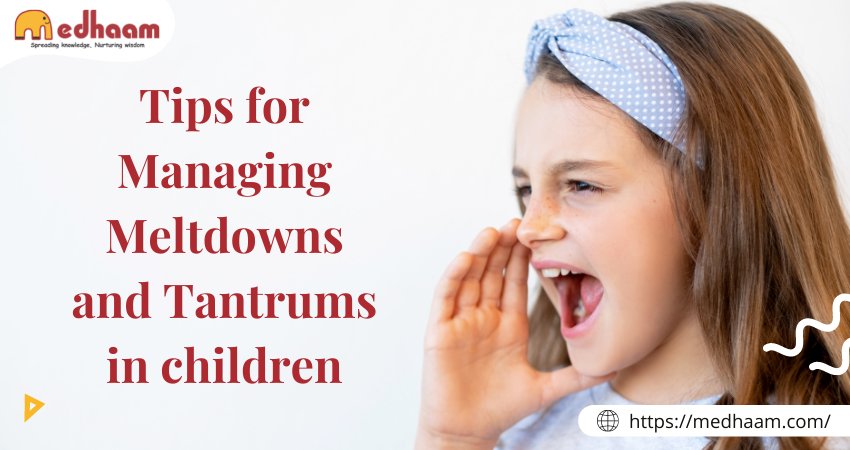Tips for Managing Meltdowns and Tantrums in Children
A kid's temper tantrum is unavoidable for every family. A tantrum makes time stand still until your child can gain control again!
Meltdowns and Tantrums are scary for parents. You might not realize that it can scare your kid. We all know that out-of-control behavior shocks kids - they're not used to feeling bad, and they need help managing their reactions to situations and feelings. Many parents complain about their kids' tantrums and meltdowns at our
childcare and preschool center. The following tips are from our teachers on how they manage tantrums and meltdowns of our kids at the
childcare and kindergarten center in Gurugram. You can use them to calm down your child.
BEST STRATEGIES FOR KIDS' tantrums and meltdowns:
1. Embrace the positive
Consider different ways you could congratulate your child so that he or she knows how much you love and appreciate them instead of having one or two go-to phrases. Kids (and people in general) only hear one compliment out of seven, but remember all the negative ones. That means you should give 8 compliments every time you correct something in them! At
Medhaam preschool and daycare Gururgam we believe in rewarding positive behaviours. We often reward children with value certificates in school for example ‘Dhir’ value certificate is rewarded for a child displaying tolerance (waiting patiently for his/her turn etc).
2. Play with them!
You can play games with them or does something fun with them. Take part in a craft or something to keep boredom at bay. The main reason behind tantrums and meltdowns in children is boredom and loneliness.
Do you have any experience with boring toddler tantrums?
They will throw tantrums if they don't have something to do.
3. Redirect their temper tantrums
Sometimes, all you can do is redirect the tantrum.Give your child something fun, shiny, or intriguing to distract them. This relieves boredom tantrums and prevents tantrums due to fatigue in many cases. A distraction is often the most effective solution.
4. Wait out the kids throwing tantrums
It can sometimes prove challenging to handle a tantrum when redirecting and distracting the child. You can shorten toddler tantrums and meltdowns by waiting for them to pass. A tantrum and meltdown is simply the child expressing their discomfort. Ignoring the tantrum and then discussing other ways to cope with disappointment later is not a socially acceptable approach.
5. Wait a few minutes and then discuss tantrum behavior
In the middle of a tantrum or right afterward, the child is still emotional and not yet ready to think clearly and talk. Parents may also need time to gather their thoughts. It was great to have a time out or a 10-minute break to take a deep breath and relax before the discussion.
There was no punishment in the time out, just a strategy to calm down your kid. There are times when a hug is all we need!
6. The quiet tantrum discussion
It is better to find a way to calmly talk about the problem with your child rather than ignore it. You'll worsen the situation by getting angry or yelling at the child, further reinforcing their negative behavior.
Stay calm and remain silent instead. Remember that tantrums are temporary. Let them know about other positive things going on in their life so they can move on with their day despite their disappointment.
7. Get them a hug
Did you know that tantrums have some science behind them?
These regulations are not arbitrary or solely intended to frustrate us as mothers. The reason for Meltdowns and Tantrums is usually anger or sadness. You can get the best approach by analyzing the cause and root of your child's behavior.
In any situation related to your child's education or behavior, our staff at Medhaam
daycare,
preschool/kindergarten is always here to assist you and your child.
